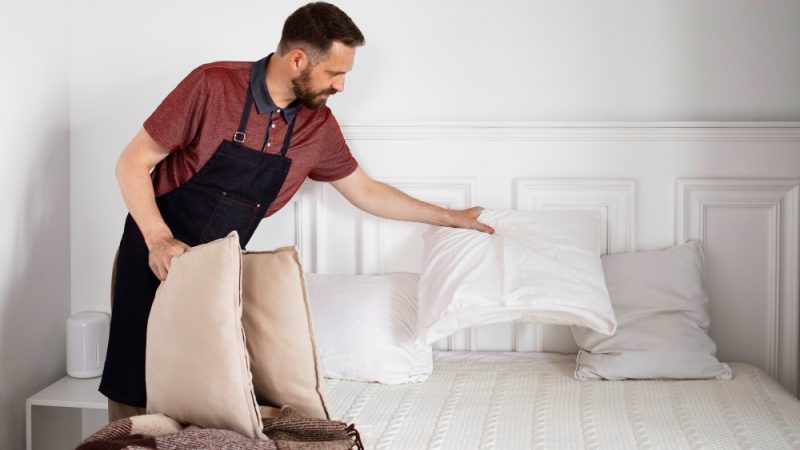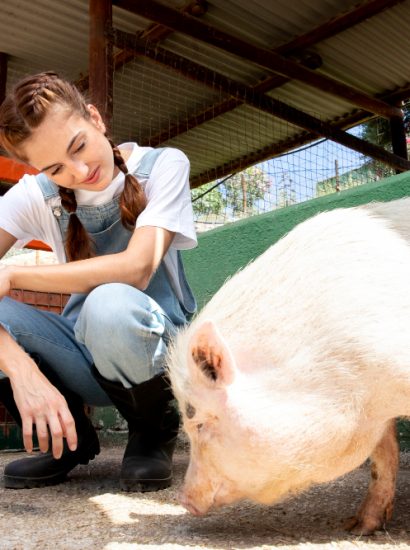There’s nothing quite like sinking your head into a soft, fluffy down pillow after a long day. Down pillows are prized for their luxurious feel, comfort, and breathability. However, to keep that cloud-like softness for years, proper care and maintenance are essential. Neglecting them can lead to flattened filling, unpleasant odors, and reduced comfort.
In this guide, we’ll walk through everything you need to know about pillowcase down maintenance — from cleaning and fluffing to storing and protecting your investment. With the right approach, your pillows will stay as fresh and cozy as the day you bought them.
Understanding What Makes Down Pillows Special
Down pillows are filled with the soft under-feathers of ducks or geese, known for their ability to trap air and provide warmth while remaining lightweight. This natural filling gives down pillows their signature fluff and softness.
Unlike synthetic fillings, down is breathable and durable. However, it also requires special care because natural feathers can lose their loft if exposed to moisture, improper washing, or heavy compression. Proper maintenance keeps your pillows in top condition and prevents the down from clumping or breaking down over time.
Why Pillowcase Maintenance Matters
Your pillowcase plays a big role in protecting your down pillow. Every night, pillowcases absorb sweat, oils, dead skin, and dust from your face and hair. Without regular washing, these impurities can penetrate the pillow itself, leading to odor buildup, dust mites, and reduced freshness.
Maintaining both the pillow and the pillowcase ensures a cleaner sleeping environment and prolongs the life of the down filling. Think of your pillowcase as the first line of defense — when you care for it properly, you also protect the pillow inside.
How Often Should You Wash Down Pillowcases and Pillows
Many people wash their pillowcases weekly but forget that pillows also need attention. For optimal hygiene and longevity:
- Wash pillowcases once a week. This prevents oils and sweat from seeping into the pillow.
- Wash down pillows every 4 to 6 months. Frequent washing can damage the feathers, but occasional deep cleaning is necessary to remove buildup.
- Use a pillow protector. A washable protector between the pillow and pillowcase adds an extra layer of cleanliness.
Regular maintenance keeps your pillow smelling fresh and feeling fluffy while preventing bacteria or allergen buildup.
Pre-Wash Preparation for Down Pillows
Before washing a down pillow, check the care label carefully. Most down pillows can be machine washed, but some may require professional cleaning. If your pillow is machine washable, follow these pre-wash steps:
- Inspect for damage. Make sure there are no tears or open seams that could release feathers.
- Remove pillowcases and protectors. Wash these separately.
- Use a front-loading washer if possible. Top-loaders with agitators can damage the delicate filling.
- Use gentle detergent. Choose a mild, low-suds detergent designed for delicate fabrics.
Proper preparation ensures a safe and thorough wash without compromising the integrity of the down.
The Right Way to Wash Down Pillows
Down pillows can be machine washed with care. Use cold or lukewarm water and a gentle cycle. Here’s how to do it:
- Place two pillows in the washer to balance the load.
- Use a small amount of gentle detergent.
- Run an extra rinse cycle to remove all soap residue.
- Avoid fabric softeners or bleach as they can strip the natural oils from the feathers.
After washing, gently press out excess water — do not twist or wring the pillow, as this can break the down clusters and ruin the pillow’s structure.
Drying Your Down Pillow the Correct Way
Drying is one of the most critical steps in down pillow maintenance. Down feathers take time to dry completely, and any residual moisture can lead to mildew or odor. Follow these tips for safe drying:
- Use a low-heat tumble setting on your dryer. High heat can scorch the feathers.
- Add a few clean tennis balls or dryer balls to help fluff the pillow and break up clumps.
- Check the pillow periodically to make sure it’s drying evenly.
- Once dry, let the pillow air out for a few hours before placing it back on your bed.
Proper drying keeps the down light and fluffy and prevents unpleasant smells from developing inside the pillow.
Daily Care: Fluffing and Airing Out
To keep your down pillow fresh between washes, fluff it daily. Simply grab both ends and shake it a few times to redistribute the filling. This helps maintain its shape and prevents the down from flattening over time.
Additionally, air your pillows outside on a dry, sunny day once or twice a month. Sunlight naturally deodorizes and removes moisture trapped in the feathers. Just be sure not to leave them out in damp or humid weather, which can reintroduce moisture.
Storing Down Pillows Properly
If you plan to store your down pillows — for example, during seasonal changes or travel — proper storage is essential to prevent mold and flattening.
- Store in a breathable cotton bag or pillowcase. Avoid plastic bags, which trap moisture.
- Keep in a cool, dry area. Excess humidity can damage the feathers.
- Fluff occasionally. If stored for a long time, give your pillows a good shake every few weeks to keep the down distributed.
Proper storage preserves your pillow’s softness and prevents odor or moisture buildup.
Common Mistakes to Avoid in Pillow Maintenance
Even with good intentions, it’s easy to make mistakes that can shorten the life of your down pillow. Avoid these common pitfalls:
- Overwashing: Washing too frequently can strip oils from the down and cause it to lose loft.
- Using harsh detergents or bleach: These chemicals can damage the delicate feathers.
- Skipping thorough drying: Damp down can mildew quickly, leading to bad odors.
- Compressing or folding pillows during storage: This breaks down the filling and causes lumps.
- Ignoring pillow protectors: They provide vital protection against moisture and dirt.
By steering clear of these mistakes, you ensure your down pillows stay soft and supportive for years.
Extending the Life of Your Down Pillows
With the right care routine, high-quality down pillows can last five to ten years or more. To extend their lifespan:
- Rotate pillows every few months to ensure even wear.
- Replace pillowcases regularly to keep oils from seeping into the down.
- Gently fluff daily and air out monthly.
- Keep pillows away from moisture and direct heat sources.
Following these steps not only maintains the fluffiness and comfort of your pillows but also protects your investment in quality bedding.
Conclusion
Down pillows offer exceptional comfort, softness, and breathability — but only if they’re well cared for. Proper pillowcase and pillow maintenance prevent moisture, dirt, and oils from damaging the delicate feathers inside. By washing carefully, drying thoroughly, and fluffing regularly, you can preserve their luxurious feel for many years.
Remember that good pillow maintenance isn’t just about cleanliness — it’s about maintaining comfort, hygiene, and the quality of your sleep. When you treat your down pillows with care, they’ll reward you with restful nights and long-lasting softness.
FAQs
1. How often should I wash down pillows?
You should wash down pillows every four to six months, depending on usage. Pillowcases and protectors should be washed weekly to keep them clean and hygienic.
2. Can I put my down pillow in the dryer?
Yes, but always use a low-heat setting. Add dryer balls or clean tennis balls to help restore fluffiness and break up clumps while drying.
3. How do I know if my down pillow is completely dry?
Your pillow should feel light and airy, with no damp spots. If it still feels heavy or cool to the touch, it needs more drying time to avoid mold or mildew.
4. Can I use regular detergent to wash down pillows?
It’s better to use a gentle or down-specific detergent. Regular detergents can remove natural oils from the feathers, reducing their loft and softness.
5. How long do down pillows typically last?
With proper care and maintenance, down pillows can last between five and ten years. Regular fluffing, cleaning, and storage practices extend their lifespan.
Also read: Will Pigs Eat Anything? The Truth About What Pigs Really Eat









